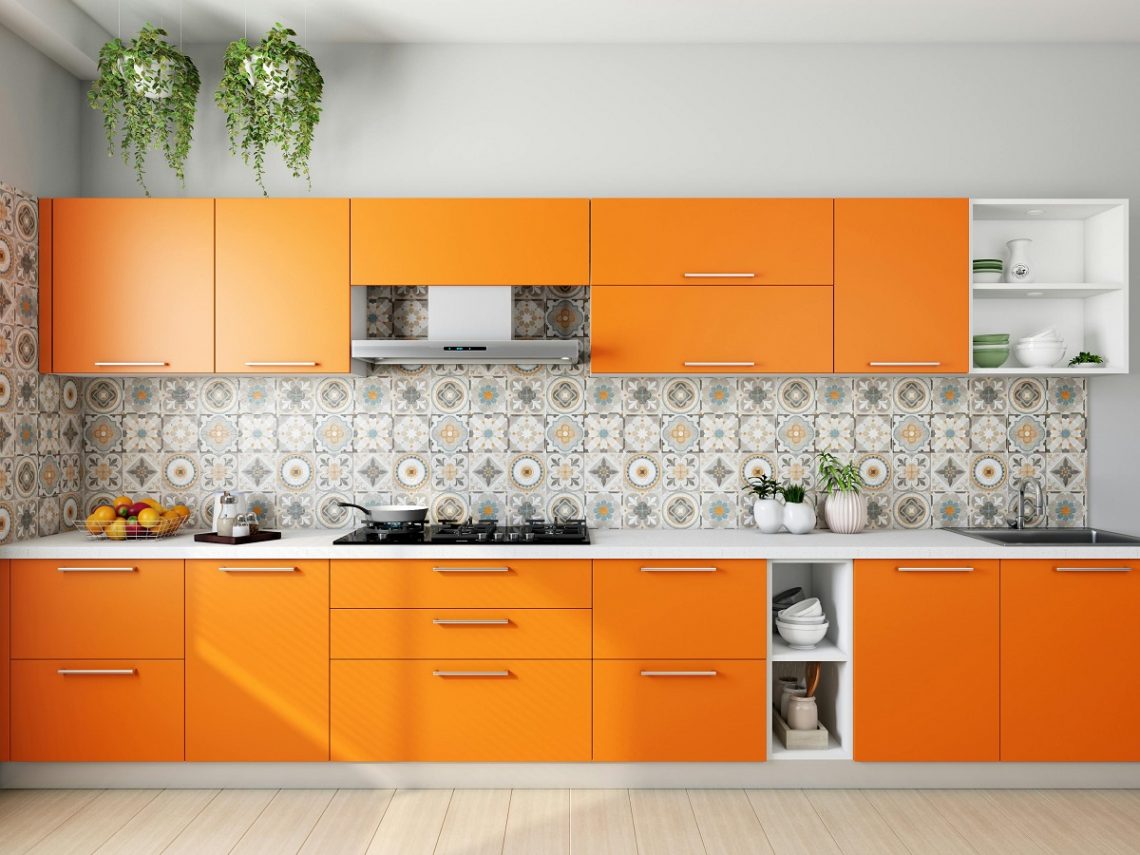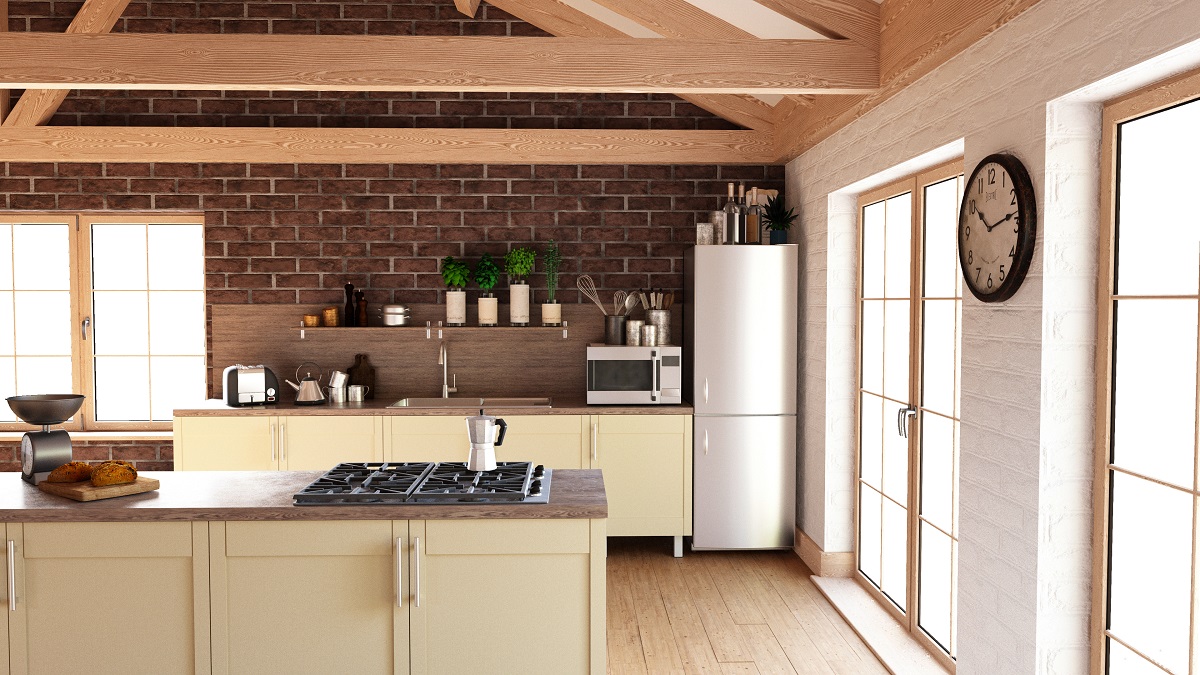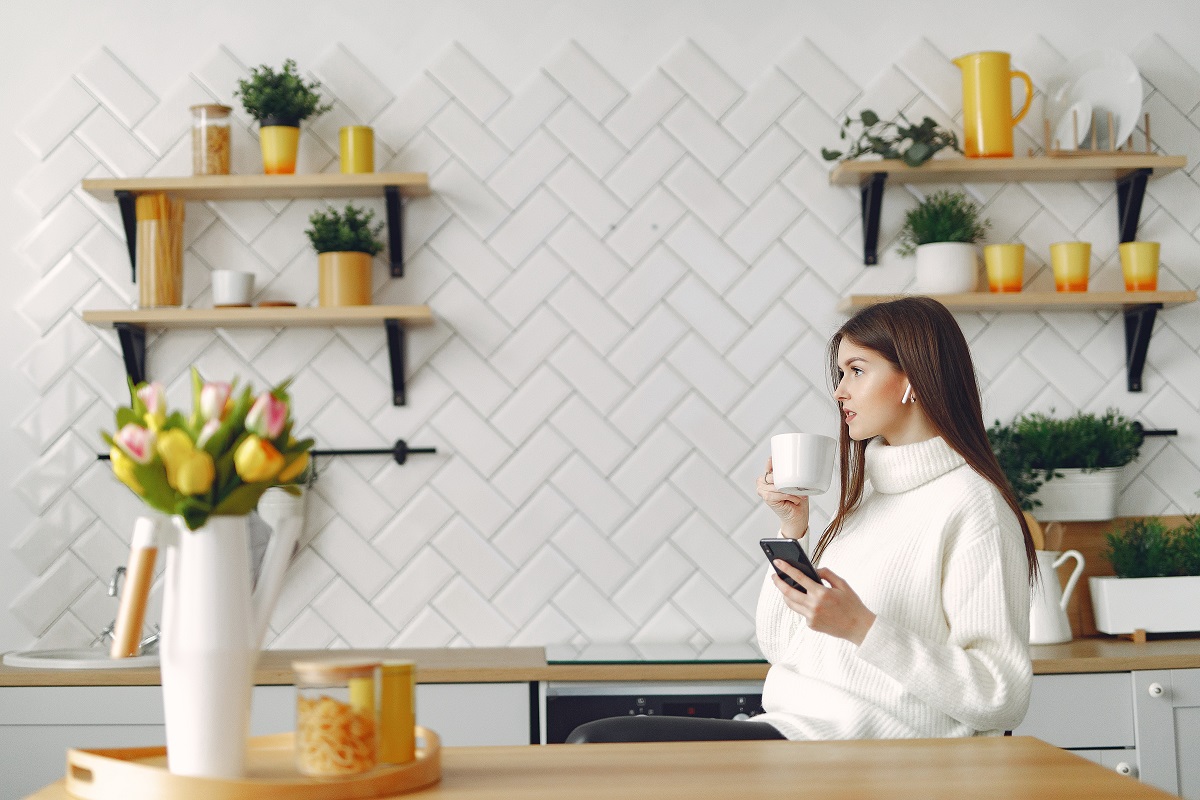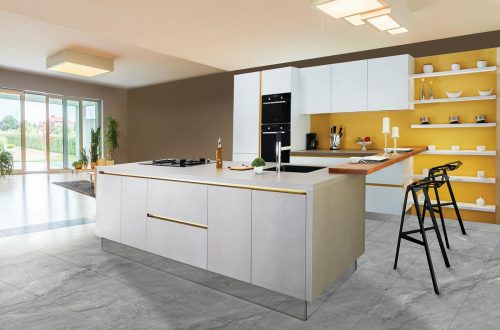
- A kitchen accent wall can visually open up tight spaces by creating a focal point, adding depth, and drawing attention away from the room’s boundaries.
- Choosing the right wall is crucial—focus on walls with good lighting, clear visibility, and minimal appliance coverage for the best effect.
- Color choices significantly impact the perceived space; light neutrals, pastels, and carefully balanced bold colors can make a small kitchen feel larger.
- Patterns and textures, such as vertical stripes, subtle geometric prints, wood paneling, and reflective tiles, can enhance the sense of openness without cluttering the space.
- Functional accent walls, including open shelving, pegboards, chalkboards, or magnetic surfaces, combine style with practical storage solutions.
- Strategic lighting—natural light, pendant lights, track lighting, and under-cabinet illumination—can amplify the effect of the accent wall and make the kitchen feel brighter and more spacious.
- Avoid common mistakes like overpowering colors, busy patterns, cluttered walls, or poor lighting, which can make a small kitchen feel cramped rather than open.
Tight kitchens can feel cramped, crowded, and even a little stressful to cook in. But there’s a simple design trick that can completely change the vibe of your small kitchen: a kitchen accent wall. Adding an accent wall doesn’t just create visual interest—it can actually make your space feel larger and more open.
In this article, we’ll explore practical ideas, color tips, and creative strategies for designing a kitchen accent wall that opens up tight spaces. Whether you’re working with a tiny apartment kitchen or a cozy family home, these ideas will help you maximize style and functionality.
What Is a Kitchen Accent Wall and Why Does It Matter?
A kitchen accent wall is a single wall in your kitchen that stands out from the rest. You can make it pop using paint, wallpaper, tiles, wood paneling, or even open shelving.
Here’s why accent walls are a big deal in small kitchens:
- Visual focus: By highlighting one wall, your eyes are drawn there instead of noticing the room’s boundaries.
- Depth illusion: Vertical stripes or lighter colors on the accent wall can create the illusion of more space.
- Personality boost: An accent wall allows you to introduce bold colors or patterns without overwhelming the room.
How to Choose the Right Wall for Your Accent Wall
Not every wall works for an accent. Picking the right one can make all the difference:
- Focal point wall: Often the wall you first see when entering the kitchen works best.
- Avoid walls with appliances: A wall filled with cabinets, the fridge, or oven may not be ideal.
- Consider natural light: Walls with good lighting tend to make colors appear more vibrant and the space feel larger.
- Think about function: If the wall is near your prep space, keep materials easy to clean.
Best Colors for Kitchen Accent Walls in Small Spaces
Color choice is key when trying to make a small kitchen feel open. Choosing the right kitchen wall colors for your accent wall can completely transform the space:
- Light neutrals: Soft whites, creams, and light greys reflect light, making the space feel airy.
- Pastels: Soft blues, greens, or peach tones create a calming atmosphere without shrinking the room.
- Bold colors: If you love drama, consider a deep navy or forest green—but balance it with lighter surrounding walls.
- Two-tone effect: A darker lower half and lighter upper half can add depth.
Can Patterns Actually Make a Kitchen Feel Bigger?
Yes, but the trick is knowing which patterns to use:
- Vertical stripes: Make walls feel taller and ceilings higher.
- Small geometric prints: Add texture without overwhelming the room.
- Subtle textures: Grasscloth wallpaper, wood planks, or brick veneer can create visual interest while keeping the space open.
- Avoid busy patterns: Large, complex prints can make a small kitchen feel cluttered.
Kitchen Accent Wall Ideas That Maximize Space
Here are some creative options for opening up tight kitchens:
Painted Accent Walls
- Use a light or reflective paint to add brightness.
- Consider semi-gloss finishes for a modern, clean look.
- Highlight a recessed nook or a breakfast bar with a slightly darker shade to add dimension.
Tile Backsplash Accent Walls
- Tiles aren’t just for behind the stove. Consider a full wall of subway tiles or patterned ceramic tiles.
- Herringbone or diagonal tile patterns create a sense of movement and depth.
- Glass tiles reflect light, instantly making the kitchen feel larger.
Wood Paneling and Planks
- Vertical wood planks make ceilings appear taller.
- Light-colored wood opens up the space while adding warmth.
- For a modern twist, try shiplap or reclaimed wood for texture without clutter.
Open Shelving Walls
- Instead of solid cabinetry, add open shelves on one wall.
- Display minimalistic dishware or cookbooks to create an airy feel.
- Open shelving gives depth, making the wall seem less closed in.
Chalkboard or Magnetic Walls
- A wall painted with chalkboard paint can be both functional and stylish.
- Magnetic walls allow for organization, displaying recipes or kitchen notes without bulky boards.
- Choose dark colors only if balanced with lots of natural light.
How to Use Lighting to Enhance Your Accent Wall
Lighting can make a small kitchen feel bigger and highlight your accent wall:
- Under-cabinet lighting: Illuminates counters while making walls appear deeper.
- Pendant lights: Hanging lights above the accent wall draw the eye upward.
- Track lighting: Flexible and perfect for highlighting patterns or textures.
- Natural light: Keep windows clear and unobstructed to enhance openness.
Can Mirrors Work as Kitchen Accent Walls?
Absolutely. Mirrors reflect light and visually double the space.
- A mirrored backsplash or wall panel instantly makes a small kitchen feel airy.
- Combine mirrors with soft lighting for a luxurious effect.
- Avoid large mirrored walls if your kitchen feels crowded, as reflections can sometimes create visual chaos.
Functional Accent Wall Ideas
Your accent wall doesn’t have to be purely decorative; it can serve a purpose too:
- Pegboards: Hang utensils, pots, or pans for practical storage while keeping counters clear.
- Chalkboard sections: Perfect for grocery lists or meal planning.
- Floating shelves: Display spices, small plants, or decorative items without cluttering the space.
Mixing Textures for a Dynamic Small Kitchen
Texture tricks help open up tight spaces without adding physical bulk:
- Mix wood, metal, and tile for a balanced look.
- Matte finishes with glossy accents create depth.
- Layering subtle textures makes walls feel dimensional, preventing a flat or boxed-in feeling.
Mistakes to Avoid With Kitchen Accent Walls
Even small kitchens can look worse with the wrong accent wall choices:
- Overpowering colors: Dark shades on all walls can make a kitchen feel tiny.
- Busy patterns everywhere: Too much visual noise overwhelms small spaces.
- Ignoring lighting: Without proper light, accent walls can look dull or heavy.
- Cluttered walls: Avoid filling accent walls with too many appliances or decor items.
Quick Tips for Updating Your Kitchen Accent Wall
If you’re short on time or budget, here are some easy fixes:
- Use peel-and-stick wallpaper for a temporary but dramatic change.
- Add removable wall decals for a playful accent.
- Paint a single section of the wall a bold color rather than the entire wall.
- Swap open shelves or floating cabinets for a lighter, airier look.
Can Small Kitchens Handle Bold Accent Walls?
Yes, but balance is key:
- Pair bold colors with light surrounding walls and neutral flooring.
- Use reflective or glossy finishes to bounce light.
- Keep accessories minimal to prevent visual overcrowding.
- Consider a single bold strip or panel instead of covering the entire wall.
Seasonal and Trend-Inspired Accent Walls
Trendy walls don’t have to feel permanent:
- Seasonal colors: Swap decor or wall decals for spring pastels or winter neutrals.
- Tile updates: Change removable backsplash tiles to reflect seasonal moods.
- Plants and greenery: Add small wall-mounted planters for a fresh, open vibe.
How to Make Your Accent Wall Work With Cabinets
Your accent wall should complement—not clash with—your cabinets:
- Lighter cabinets pair well with darker walls to create contrast.
- Dark cabinets can be balanced with a light, reflective accent wall.
- Consider painting just the wall behind open shelves for a layered look.
Final Thoughts
A kitchen accent wall is more than a decorative trend—it’s a powerful tool for transforming tight spaces. By choosing the right wall, colors, materials, and textures, you can make a small kitchen feel larger, brighter, and more inviting.
From bold paint colors to reflective tiles, open shelving, or even functional pegboards, the possibilities are endless. Focus on balance, light, and functionality, and your accent wall won’t just look good—it will make your kitchen feel like it has more space to breathe.
With these ideas, your small kitchen can feel airy, stylish, and completely transformed. Pick a design that suits your style, and start experimenting with accent walls today. You’ll be amazed at how much of a difference one wall can make.





